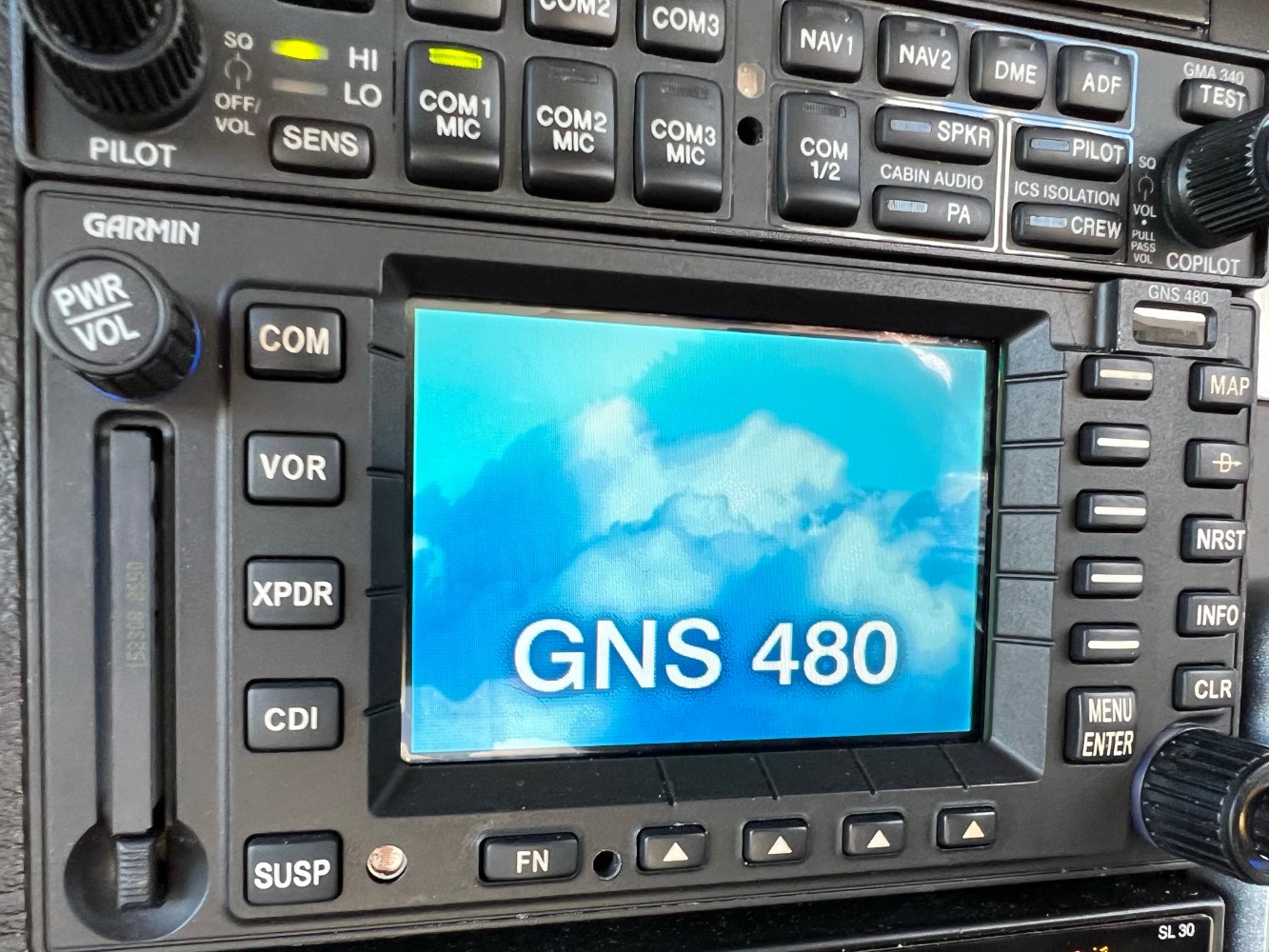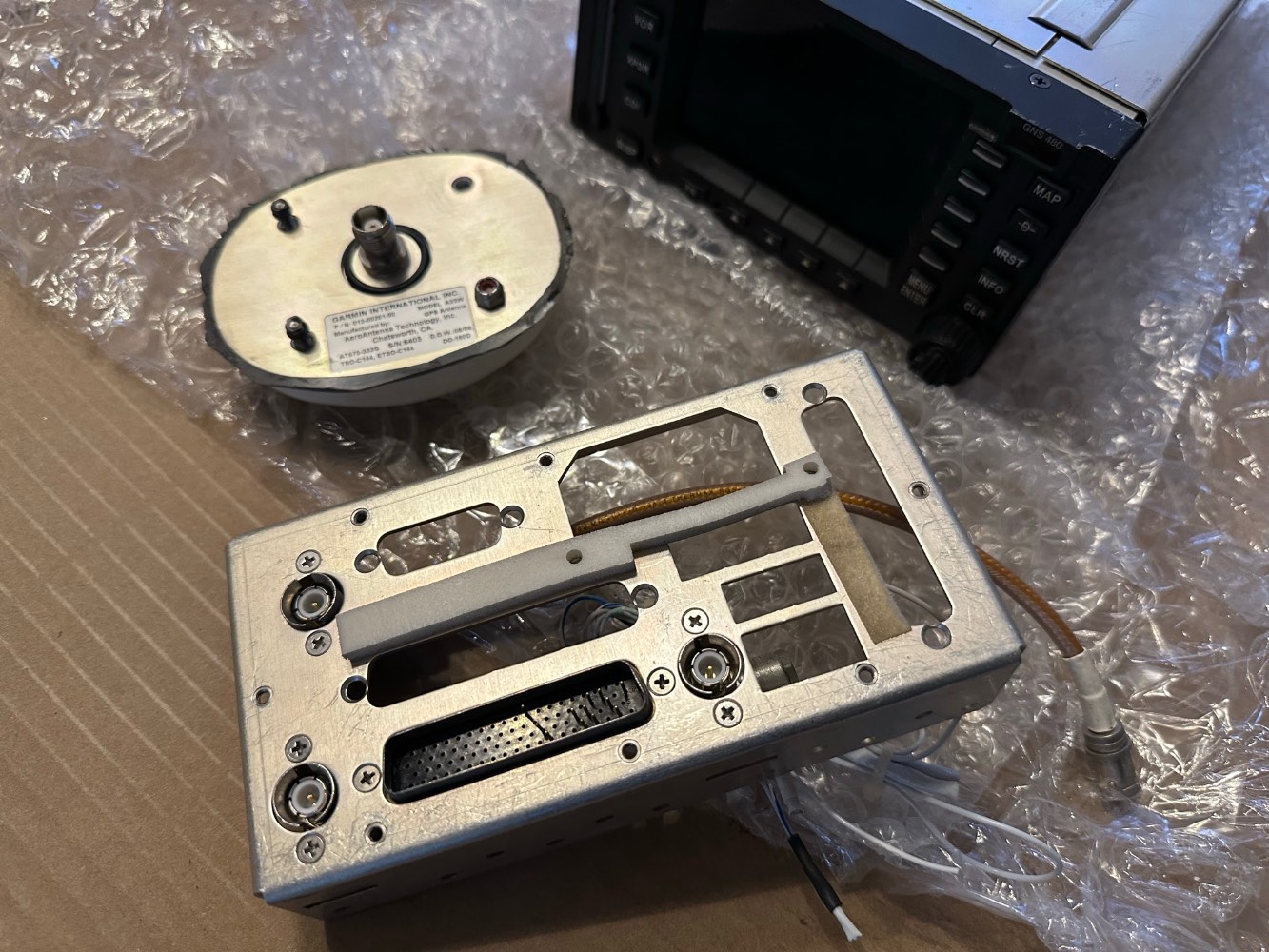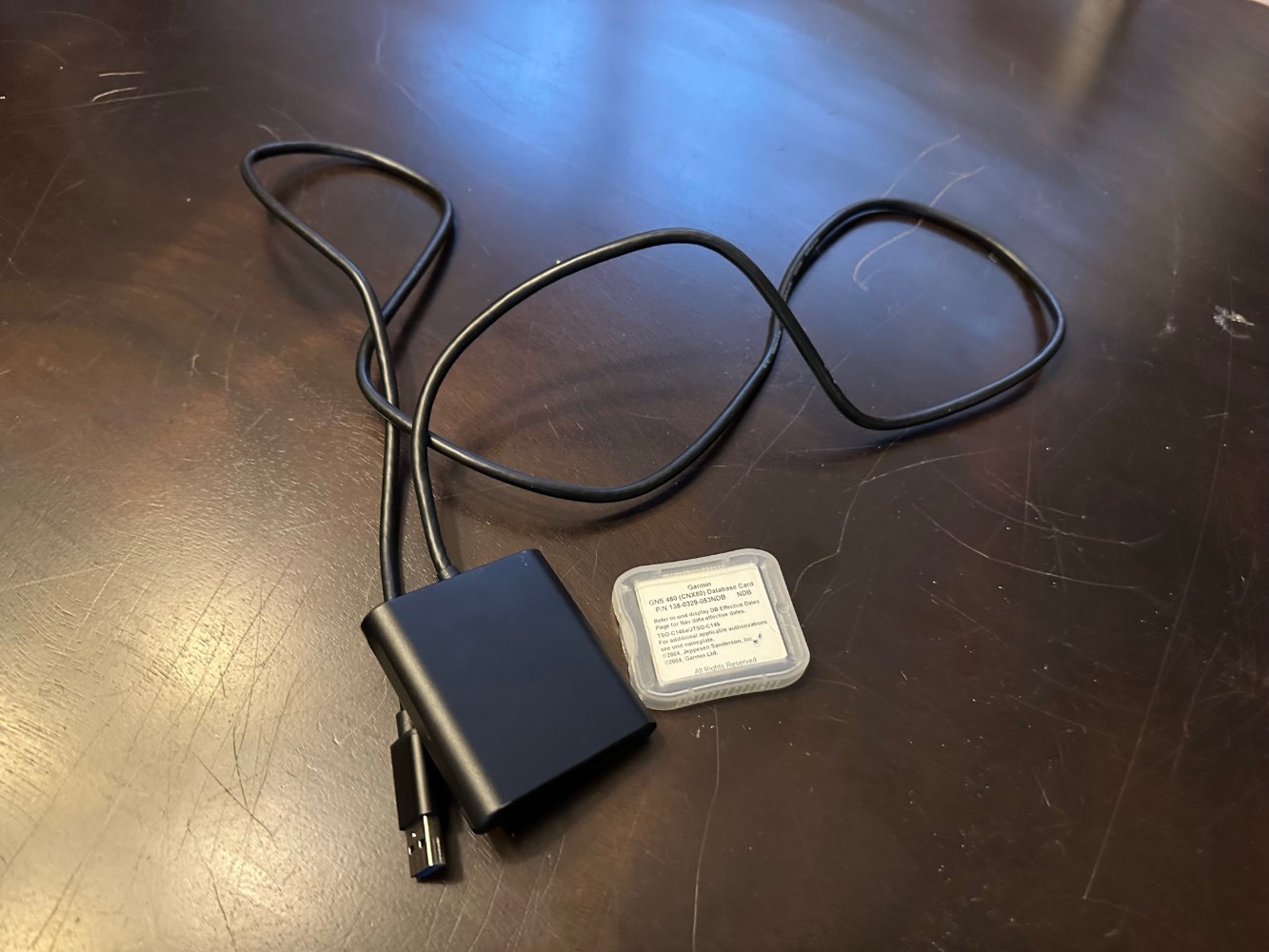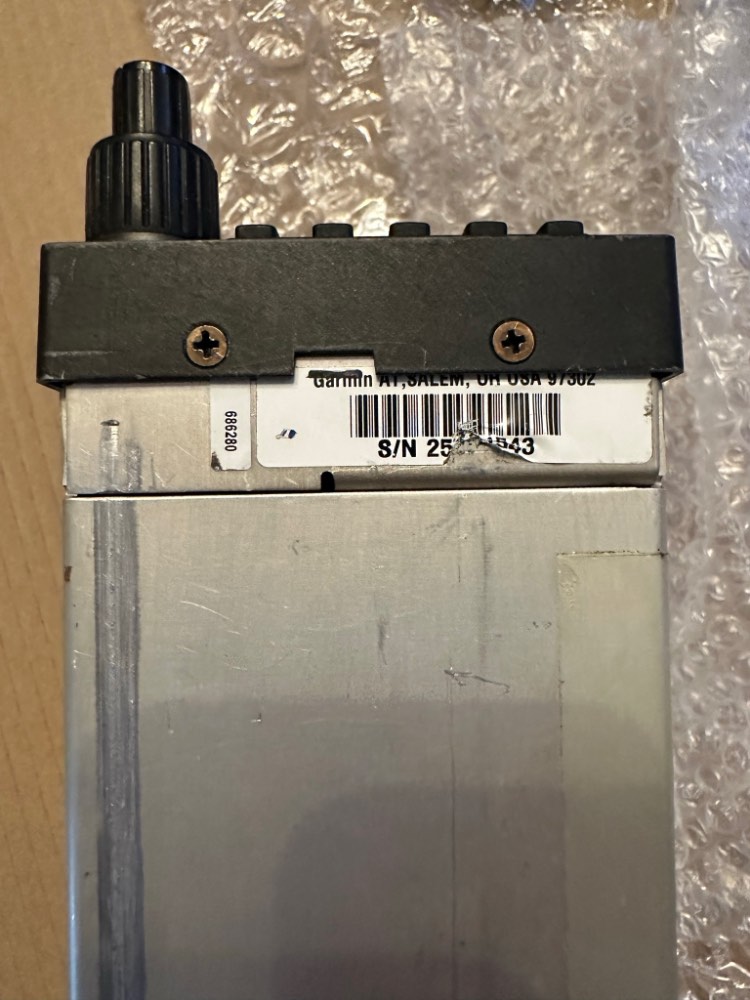-
Posts
128 -
Joined
-
Last visited
-
Days Won
2
Content Type
Profiles
Forums
Blogs
Gallery
Downloads
Media Demo
Events
Everything posted by Ryan ORL
-

KFC200 Trim Switch Needed - And Cost Reality Check
Ryan ORL replied to PeteMc's topic in General Mooney Talk
Yeah it seems to fit fine, although if they had any trouble with it, I don't know -

KFC200 Trim Switch Needed - And Cost Reality Check
Ryan ORL replied to PeteMc's topic in General Mooney Talk
Unfortunately those prices are very real. Back when I still had my KAP 150, my switch failed, and we weren't able to find (at the time) a shop that could fix my switch in a reasonable time frame. I paid around $1500 I think. I was told it was a special order item from Honeywell. I had the Bendix King (Honeywell) 200-2960-00 Pitch Trim Switch. When I ripped out the whole BK system for my GFC500, I ended up selling the switch on eBay for like $500. -
Not that this possibly-a-transient guy would know this, but until very recently (gone now but as recently as a couple years ago?) the TPA at SGJ was published as 800. It was definitely 800 when I did my PPL there in 2007 and it was the outlier that I used to point my students to. Guess the FAA finally changed it. Anyway, if he was a local, this wouldn’t necessarily be uncommon.
-
I echo the above comments about dumping the KFC150 and maybe selling a couple of the GI-275s to recoup some cost. Just do the GFC500. I absolutely love my G3X w/ EIS plus GFC500/GTN650 combo panel. I just cannot see dumping that many AMUs into a halfway solution. Once a G3X is involved, you're at least cutting a whole new panel and hopefully tearing out a ton of the old wiring. Why not just get it done with? You know the GFC500 will be will supported for years to come, and you can dump all the old wiring. And I certainly can't see spending more money to get into a G500 setup just to keep the King autopilot. Plus you're getting a modern digital autopilot that supports VNAV and all the other vertical modes you would expect. My airplane had an Aspen and KAP150 when I bought it... and I had to have it repaired at one point also. Sarasota Avionics has basically one old guy in his 70s who used to work for BK and is their "King autopilot guy". It was super expensive, a lot of money was wasted debugging it, and in the end, I never felt confident we wouldn't be working on it again very soon. One of the biggest motivators for dumping all my money on avionics was to just be rid of the old stuff and not have to be stuck dealing with a (decreasing) handful of shops that are willing to work on that stuff. Fwiw, I sold my old KAP150 head unit and BK servos on eBay and I got at least $3500 out of the lot of it. If you don't go that route, I also echo the other posters and say, pass on the G3X or G500, just do 3x GI-275s. (Attitude/HSI/EIS) The install will be much simpler... I wouldn't rip up my whole panel to keep a bunch of legacy stuff around.
-

Freshly overhauled IO-360-A3B6 - max fuel flow too high?
Ryan ORL replied to Ryan ORL's topic in General Mooney Talk
I did a small calibration test on the fuel totalizer… through about 16 gallons it was off (high) between 3-4%. So not perfect but pretty close. I will run a better calibration soon on a larger sample. So I pulled my most recent takeoff log… Max fuel flow hit 20.7 gal/hr (29"/2690 rpm). If my quickie calibration is roughly correct, that would correspond to around 19.9 or 20.0. EGTs were in the 1160-1180 range for the most part. My plan, I think, is to fly it this way and maybe dial the mixture knob back one turn or so to aim for around 19 on takeoff. Meanwhile I will see what the engine shop thinks. I’m reluctant to mess with anything else until annual probably, which is coming in a little over a month. I will finish the break-in within the next week or two, I hope. -

Freshly overhauled IO-360-A3B6 - max fuel flow too high?
Ryan ORL replied to Ryan ORL's topic in General Mooney Talk
That’s a pretty good guess, I definitely saw around 1150 I want to say, but I will go pull the SD card tomorrow and take a look. -

Freshly overhauled IO-360-A3B6 - max fuel flow too high?
Ryan ORL replied to Ryan ORL's topic in General Mooney Talk
-

Freshly overhauled IO-360-A3B6 - max fuel flow too high?
Ryan ORL replied to Ryan ORL's topic in General Mooney Talk
Going to do that this week because I’m sure that sensor was touched during the install. It was previously accurate to within less than half a gallon over a 50 gallon burn. -

Freshly overhauled IO-360-A3B6 - max fuel flow too high?
Ryan ORL replied to Ryan ORL's topic in General Mooney Talk
It does make full static RPM, even when full rich. I'm guessing it might be not the right size nozzles... we'll see what the engine shop says. -

Freshly overhauled IO-360-A3B6 - max fuel flow too high?
Ryan ORL replied to Ryan ORL's topic in General Mooney Talk
Yes, the servo was an overhaul exchange unit from Avstar Fuel Systems. I am guessing it was configured incorrectly. -

Freshly overhauled IO-360-A3B6 - max fuel flow too high?
Ryan ORL replied to Ryan ORL's topic in General Mooney Talk
Yes, all my accessories were overhauled. The mags were overhauled by Quality Aircraft Accessories. -
Hey all, tl;dr - New engine is running richer than the old one and I believe it is causing the mag checks to be rough I just had my IO-360-A3B6 major overhauled by an engine shop down in South Florida. They ran it 3 hours in the test cell and it's back on the airplane now and I've done a couple break-in flights, and fortunately things are mostly looking good so far, and my install shop has helped me fix a few gremlins w/ the (also freshly overhauled) governor, etc. However, one remaining issue is that my mag checks are considerably rougher than I would expect, dropping in some cases almost 200rpm. The mags seem timed close to each other, the split isn't much. Yesterday I decided to debug this issue a bit, and I noted that there is the proper rise of EGT on all 4 cylinders on both mags, so I don't think there is any issue with bad plugs. I had noticed that on my first takeoff (when I was watching all the indications quite closely) that my takeoff fuel flow was higher than normal, hitting around 20.5 gal/hr. My old engine hit around 18.5 gal/hr on takeoff. (From my research on the forum here, that seems to be the correct value, approximately) Takeoff power felt normal, and probably a bit stronger than the old engine, and I suspect my old engine was down a bit on performance, so a bit higher fuel flow isn't terribly surprising, but I didn't expect that much more flow. Anyway, based on this, I suspected that my full-rich mixture setting is a too rich. So I repeated the mag check with the mixture slightly pulled back, and the mag checks were totally normal. I also noted the full-rich runup RPM (2000) fuel flows were also higher than the old engine. I suspect the fuel flows are higher across the board. Based on my reading, this is basically not adjustable... so I think it's potentially an issue with the fuel servo and I guess I need to contact the engine shop for their opinion?
-
I had a hell of a problem with hot starts on my IO360 when I first got my J. Swapped the mags, plugs (fine wires), etc. Tried every single "method" out there. They would all work most of the time, but occasionally it would be difficult. I also sometimes let a friend fly my airplane, and of course he would always have trouble. Decided that I was sick of this crap. I bought a SlickStart and had it installed 2 years ago. I've never had an issue starting, hot or cold, ever again. It just starts, always, without exception, without any special incantations or messing around with flooded start procedures.
-
I don’t have any K time so can’t comment there, but I have flown my J around the Rockies a bit, landed at Leadville, and operated at a few other high altitude airports… it does fine, really. Obviously I wouldn’t do it midday in the summer at max gross, but the runway and climb performance was plenty adequate for my wife and I and a bunch of bags and maybe 40 gallons onboard for the really high airports like LXV. That’s a lot of flying miles in a Mooney. I operated from COS and GJT with full tanks without any issues either. To me the real question comes down to whether or how often you plan to fly on oxygen. I personally don’t want to (flying with our dog) and so I flight plan to avoid the need for it. You can get really anywhere at 12k without going too far out of your way… but if you wanted to go *over* the rocks, obviously you need the turbo. If I lived out there I would probably have a turbo, but I don’t think I would really *need* the turbo except occasionally.
- 35 replies
-
- 2
-

-
I (through my LLC) am the sole owner of my Mooney, however I let another guy (frequent GA pilot/instructor, active airline pilot) that I trust use my plane. We both have non-exclusive dry leases with the LLC, and we pay a monthly fee to access the plane (for hangar, ins, etc) and a dry hourly rate for the usage of the plane. There may be other/better ways of setting this up, but that is how I do it. It is not a money making operation, it is more like a lose-less-money operation. I paid (too much) for an aviation attorney to setup this arrangement, however I probably could have done it myself, if I knew then what I know now.
-
Yes, I have the A3B6 non-D. Forgot it may not be available for the dual.
-
I tried all the various incantations and spells mentioned above for hot starting, and I had new mags and fine wire plugs, etc. I mostly used the "Maxwell method" in the video above. It works well, about 95% of the time. Of course, in the other 5% of times where something goes wrong and you don't get it first try, then you're in the 'unknown' state and end up fussing with it for a while. Then I bought a SlickStart and have never thought or worried about any of this ever again. It fires right up, every single time, hot or cold. Best money I've ever spent on my plane.
-

Removing wingtop sight fuel indicators.
Ryan ORL replied to 0TreeLemur's topic in General Mooney Talk
Looking at these photos makes me confused about how these things work... I expected some sort of wire or mechanical linkage in the back, but there appears to be nothing? Anyway, my sight gauge glass is all fogged up so I'd like to replace mine also. Glad to hear they're still available. -

Florida area Garmin Shop, please?
Ryan ORL replied to Glen Davis's topic in Avionics/Panel Discussion
AMI Aviation Services in Sanford (KSFB) did my G3X/GFC500 install -
I have a GNS 480 for sale. I recently removed it from my 1984 J for upgrade to a new G3X Touch panel. See my panel upgrade thread here: At the time of removal, it worked but needed a new backup battery. Rather than sell it like that, I sent it to Chris Short who replaced the battery, re-centered the COM carrier frequency, corrected a display-off current issue, repaired the outer knob encoder which sometimes was skipping, and replaced all the problematic capacitors. The unit now tests good and I received it back from him today. In all it was around $470 in repairs not including the basic diagnostic. I believe it's in good condition now. (Can send you a pdf of my email thread with Chris if you like) The display does have a cosmetic issue with delamination (see photos) but it has been that way since I bought my airplane and I have never noticed it in actual usage with the screen powered on. Also the rack apparently partly pinched/ripped away the serial number sticker but you can clearly see it on the photos of the unit config page. I have also the tray, backplate, GPS antenna, and a spare database card. I'm asking $3700, which is lower than I’ve listed it elsewhere (the GNS480 mailing list, for now). Figure $60 UPS Ground shipping, mainly on account of the insurance value. Obviously this is an expensive unit, so I am happy to phone call/FaceTime, send more photos, etc whatever you need to feel confident. I’ve recently sold a number of my other avionics on here and probably those members can vouch for me if needed. I can take PayPal or Venmo.
-
It is normal for the A/P AHRS Fail light to turn on when you turn on the avionics bus. As you note, it should extinguish after 10-15 seconds when the EA100 boots up. If the EA100 has failed, the light never extinguishes. When my last EA100 failed, it first did so intermittently as you describe, and then more frequently, and then always. You can shortcut your troubleshooting steps above by simply pulling the EA100 breaker and recycling it. Rebooting everything else is not necessary. (Could be labeled "AHRS" in your setup maybe?) I can echo the above statements about failed EA100 units not being particularly unusual. Everything else in the Aspen/KAP150 system worked fine, but the EA100 is a junk piece of hardware. I had three EA100 units fail in my plane in only 18 months before I threw in the towel and ripped it all out for a GFC500.
-

Mooney Purchase - m20F sitting for 8 years
Ryan ORL replied to Mellow_Mooney's topic in General Mooney Talk
Most of that is FUD and "I don't like prebuys" stuff. Every airplane prebuy is going to generate pages of squawks if the prebuy is thorough enough. Most of them will be minor and not even really need to be addressed... more like "something to be aware of". So that's a bit of a silly criticism. BUT, I personally wouldn't let a buyer pull a cylinder on my airplane, but then I also am not trying to sell an airplane that's been sitting for 8 years. My opinion on that is... you inspect what you can inspect (borescope, oil analysis, screen, cut filter, etc) and he should mark the price appropriate to the increased risk of the stuff you can't see... and then you assume that risk if you decide to purchase it, in exchange for a better price. You should go into it expecting to potentially need to do an engine, and value it appropriately. I believe the increased risk of maintenance induced failure from R&R of a cylinder probably outweighs any reassurance you can get yourself from inspecting the camshaft directly. I believe the Mike Busch attitude towards this is that airplanes don't fall from the sky because camshaft lobes get worn down... If the camshaft is coming apart, you'll find out pretty quickly from the oil screen. All this being said, I personally purchased my plane at TBO because I don't trust other people to care for an engine (or to be truthful and complete about the flying history since OH) and I believe you should always assume any airplane engine could require overhaul tomorrow. There is very little that is inherently "safer" about buying a 500, 750, 1000 SMOH engine versus a 2000 SMOH... other than that you will have paid a lot more money for it. On the used airplane market, I think there's no bigger ripoff than a "350 SMOH" engine that was last overhauled in 2007. -
On the certified G3X, a number of options that are "user-changeable" from the experimental version are set to hidden and therefore only changeable from configuration mode. I guess, by the letter of the law, you can only have the markings exactly the same as what your POH says. Red range here, yellow range there, red radial line here, green arc here, etc. However, if you boot up in config mode, it is extremely simple to add to these to enhance safety, as was described in the original post. (Adding caution/warning alerts, etc) Of course none of us certified owners would ever do that. I would also never swap my overhead cabin lights for LEDs or anything else of that sort. My airplane conforms 100% to the original/properly altered type design.




















